The low clouds and fog of dawn had given way to sunny midday skies by the time we motored out through the sportfishing fleet tucked into Telegraph Cove, British Columbia. My old friend Craig and I were aboard my 20′ Whitehall propelled by an oddly squarish 3-hp electric motor, powered by two pairs of folding solar panels, which occupied most of the center of the boat.We slipped quietly between the fishing boats with their enclosed pilothouses and stout aluminum hulls with 4′ of freeboard. People bustling about the docks watched as we silently motored by and must have thought the two of us, in our slender boat with a noiseless motor, were about to do something foolish. As we left the cove and entered the expanse of Johnstone Strait, I wondered if we were doing something foolish.I had gained a fair bit of boating experience over the years on various lakes and oceans, though never in this part of the world, and Craig had experience on Canadian lakes and around the Channel Islands of California. He had joined me on my first two small-boat expeditions 34 years earlier—the first under sail and the second under electric power and (as it turned out) paddle power across Canadian lakes in my 17′ Whitehall. When I invited him to join me on the coast of British Columbia, I ran through the pros and cons of the boat and the equipment I had assembled, and recounted the planning and preparations I’d made over the previous months. I also noted that the experience and preparation did not guarantee I wouldn’t make mistakes.
Join The Conversation
We welcome your comments about this article. To include a photo with your remarks, click Choose File below the Comment box.

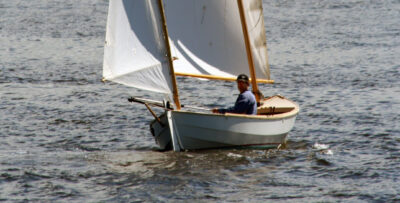
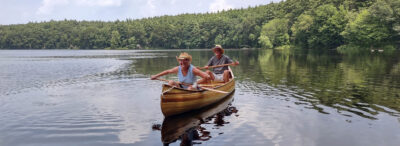
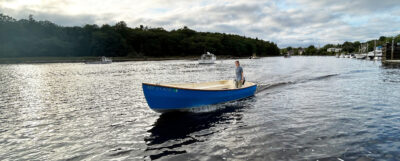
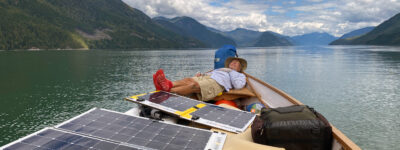

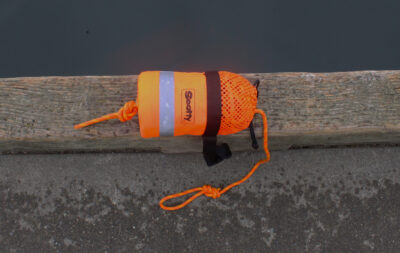
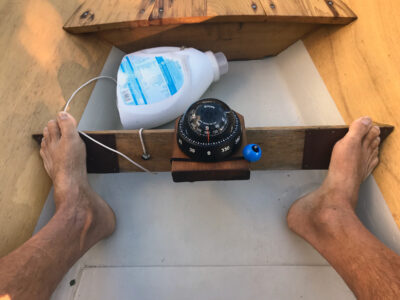
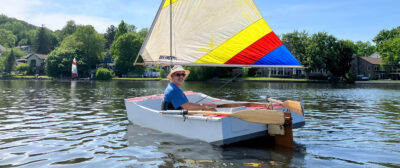
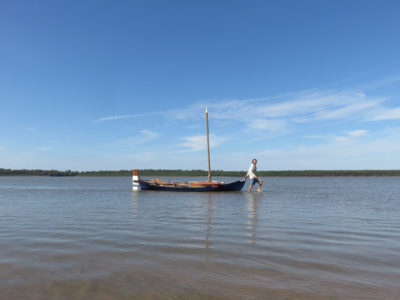
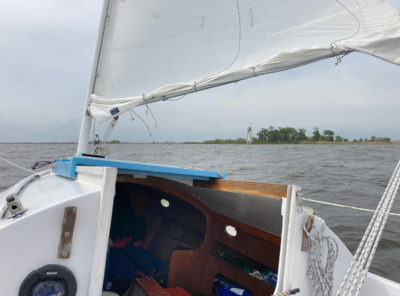

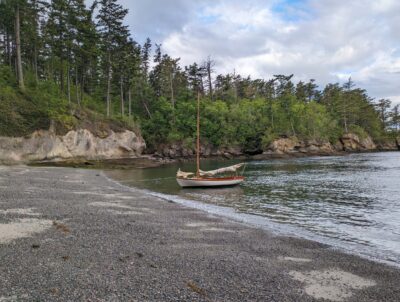
Great story! Thanks.
You could spend a lifetime exploring all the BC coast inlets and still not see them all, I think.
Thanks, Alex. Yes, indeed, and a what worthy goal that would be!
What a great adventure, Uncle Tim! Love all the pics too.
Thanks, Maddie! You’re a sweetheart!
That bear encounter sure sounded fun! Any reports of people actually being attacked in their boat? Is there an offshore distance considered safe?
I had never heard of a bear actually trying to get into a boat, Andrew, but I knew it was a possibility, and I had tried hard to avoid it on this trip. I tried even harder after it happened! My own guess is that 50 yds of water deep enough that a bear would have to swim–roughly 6′ deep–would be an adequate deterrent. That’s what I was trying to achieve in Knight Inlet. The problem was that bottom conditions and a tidal range over 10′ often made anchoring away from shore difficult.
Thanks for a great read. I’m wondering about the “boat’s jib, halyard, and tackle.” How do you deploy it? Have you got a mast aboard? And did you have a chance to use it? Also wondering about the predator bear that was “charging you like a racehorse.” I guess he didn’t pursue you after you made it into the boat? Whew, my heart was in my mouth! Anyway, thanks again for an exciting story and beautiful photos.
Thanks, Ken.
Regarding the jib: I’ve been carrying the jib and its tackle as a backup means of propulsion, and I’ve tried using it in two different ways–both successfully. My son and I took the jib and tackle, but no mast, with us on a fishing/camping expedition to Reindeer Lake (MB/SK) some years ago, and just for a lark, we cut a dead pine and shaped its base a bit for use as a mast. The boat sailed well downwind, but the wind was light during our trial, so we didn’t test it on other tacks. Then on a solo electric trip to Lake Nipigon two summers ago, I took a substitute mast that was just an 8′ x 1 7/8″ wood dowel, which stows easily and can be deployed quickly, to which I had tied a pulley at one end. I hoisted the jib by its clew using one of the attached sheets as halyard, so the jib was upside down on the 8′ mast with the tack still at the bow but the head acting as clew, the attached halyard acting as sheet, and the luff of the sail acting as foot. I tested the rig in about 15 knots of wind using a paddle to steer and made 3 1/2 knots (GPS) on a beam reach. I took the same rig to Knight Inlet but didn’t use it.
Regarding the black bear that charged me: Once I had tumbled into the boat, I looked up to the rock embankment expecting to see the bear coming over the top, but she had broken off the chase once I turned and fled. I never would have made it into the boat if she had really wanted to catch me. The bear was undoubtedly a female as there were two adult bears and two cubs, and they are careful to avoid adult male bears as they sometimes kill cubs.
I hope you didn’t release all the bottom fish you caught. Various rockfish (black, copper, quill back, canary, etc.) are all excellent eating. I have the most consistent luck jigging with a Buzz Bomb, and in fact never bother to take any other lure. Long ago I gave up using bait. If you happen onto a school of black rockfish, which inhabit the whole water column, you can haul them in almost as fast as you can deploy the B B. I have had them strike even as I was pulling the lure from the water. Once, at Belmont Point (Vancouver Is) three of us caught as many black rockfish as seven of us could eat, in less than 10 minutes. The head chef had three or four of us fire up our one-pot stoves, poured olive oil in our frying pans, dipped the filets in bannock batter, and fried them to a golden brown. The freshest fish you could ever eat, and the best tasting I’ve ever had. No tartar sauce needed.
This was all fishing from kayaks. Ling cod are also often on the menu; also kelp greenling, which are speckled like trout, have greenish flesh (hence the name) as do ling cod, which are also of the greenling family, and provide meat that closely resembles Dover sole–fine textured and delicate in flavor. I did one time happen onto a small coho salmon while trolling with a B B, but I otherwise have not had luck trolling that way. Lost the salmon, of course.
Thanks very much for the tips, David. Fishing from a kayak is great fun. We were jigging with MacFish and couldn’t keep the rockfish off the hook long enough to find out if there were other fish down there. We had to be careful where we fished because rockfish are protected in much of the area, and there appeared to be no way to keep them off the hook.